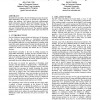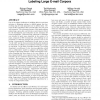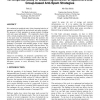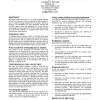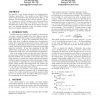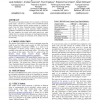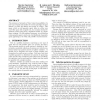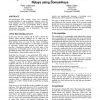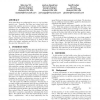CEAS
2006
Springer
14 years 3 months ago
2006
Springer
Email thread reassembly is the task of linking messages by parentchild relationships. In this paper, we present two approaches to address this problem. One exploits previously und...
CEAS
2006
Springer
14 years 3 months ago
2006
Springer
Naive Bayes is very popular in commercial and open-source anti-spam e-mail filters. There are, however, several forms of Naive Bayes, something the anti-spam literature does not a...
CEAS
2006
Springer
14 years 3 months ago
2006
Springer
One of the biggest challenges in building effective anti-spam solutions is designing systems to defend against the everevolving bag of tricks spammers use to defeat them. Because ...
CEAS
2006
Springer
14 years 3 months ago
2006
Springer
CEAS
2006
Springer
14 years 3 months ago
2006
Springer
This paper presents the results of a case study in which outbound SPAM, here referring to excessive amounts of bulk-generated email, is suppressed using dynamic Port 25 blocking. ...
CEAS
2006
Springer
14 years 3 months ago
2006
Springer
We describe a very simple technique for discriminatively training a spam filter. Our results on the TREC Enron spam corpus would have been the best for the Ham at .1% measure, and...
CEAS
2006
Springer
14 years 3 months ago
2006
Springer
We present an annotation project for two subsets of the Enron email corpus. The first is a subset of the UC Berkeley Enron Email Analysis Project and the second consists of a port...
CEAS
2006
Springer
14 years 3 months ago
2006
Springer
The existance of networks of `bots' raises the possibility of a new type of spam that breaks the current paradigm of spam defense, in which the defence acts purely as a filte...
CEAS
2006
Springer
14 years 3 months ago
2006
Springer
Store-and-forward MTA relaying servers have frequently presented problems to various antispam techniques, such as IPbased reputation or email authentication. Algorithms that find ...
CEAS
2006
Springer
14 years 3 months ago
2006
Springer
Most spam filters are configured for use at a very low falsepositive rate. Typically, the filters are trained with techniques that optimize accuracy or entropy, rather than perfor...
